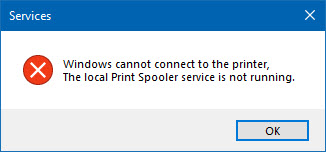
The Print Spooler service is an essential component to get your printer working properly. The “local print spooler service is not running” error could indicate a faulty configuration, or it could mean something is wrong with the computer drivers. While there may be many reasons behind this error, it’s usually not that hard to fix.
Try these fixes:
You might not need to try them all. Simply work your way down until you find the one that does the trick.
- Reconfigure the Print Spooler service
- Run the troubleshooter
- Reinstall your printer driver
- Install all Windows updates
- Check for corrupted system files
Fix 1: Reconfigure the printer service
First you can start by troubleshooting settings of services. By default the Print Spooler service runs automatically, but you should check to make sure everything is configured properly.
- On your keyboard, press Win+R (the Windows logo key and the R key) to open the Run box. Type or paste services.msc and click OK.
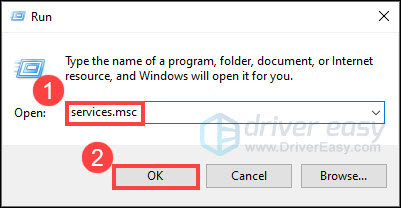
- Right click Print Spooler and select Properties.
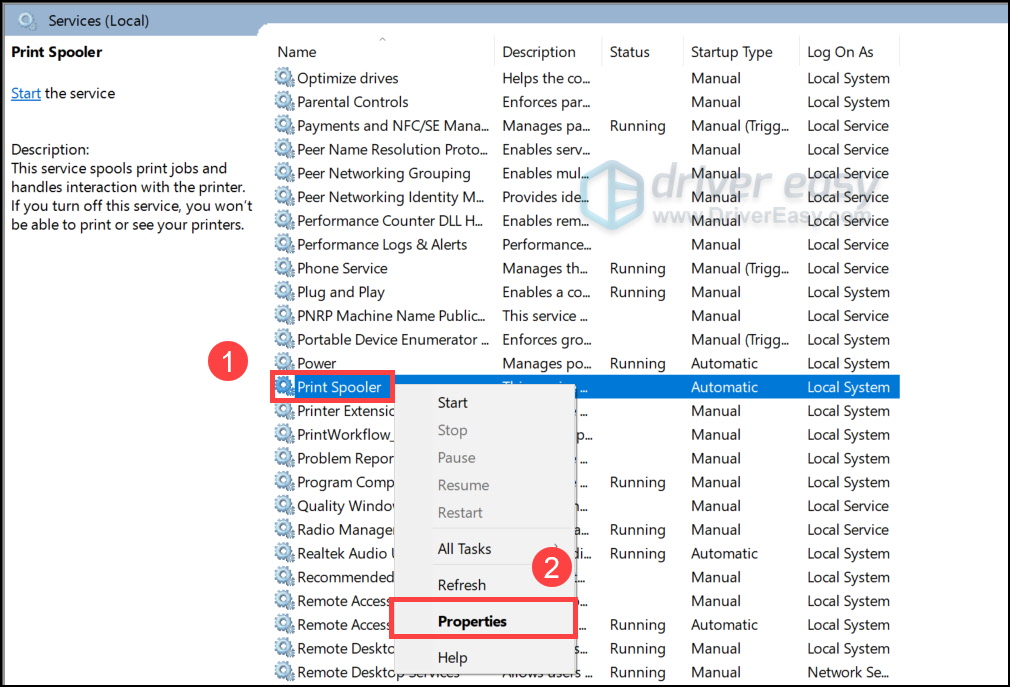
- Make sure Startup type is set to Automatic. You can also try to manually start the service by clicking Start.
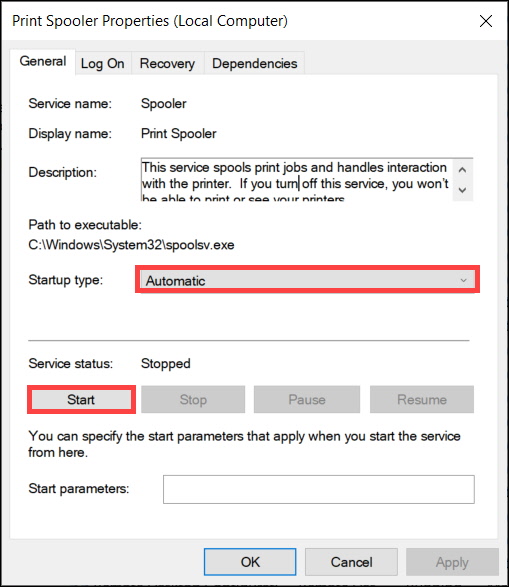
- Navigate to the Recovery tab. Make sure First failure and Second failure are set to Restart the Service, Reset fail count after is set to 1 days, Restart service after 1 minutes. Once completed, click OK to save the changes.
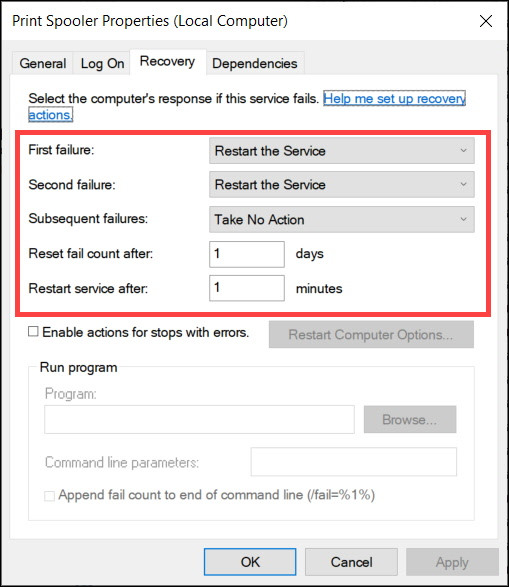
- Restart your PC and check if the Print Spooler service is up and running. If you have access to the printer, give it a reboot as well.
If the error persists, you can check out the next fix.
Fix 2: Run the troubleshooter
Windows provides a built-in troubleshooter to help you figure out what’s causing the issue. In some cases, it may provide a better insight if it’s a common error.
- On your keyboard, press Win+I (the Windows logo key and the I key) to open Windows Settings. Select Update & Security.

- On the left pane, select Troubleshoot. Click Additional troubleshooters.

- Select Printer. Then follow the on-screen instructions to troubleshoot.
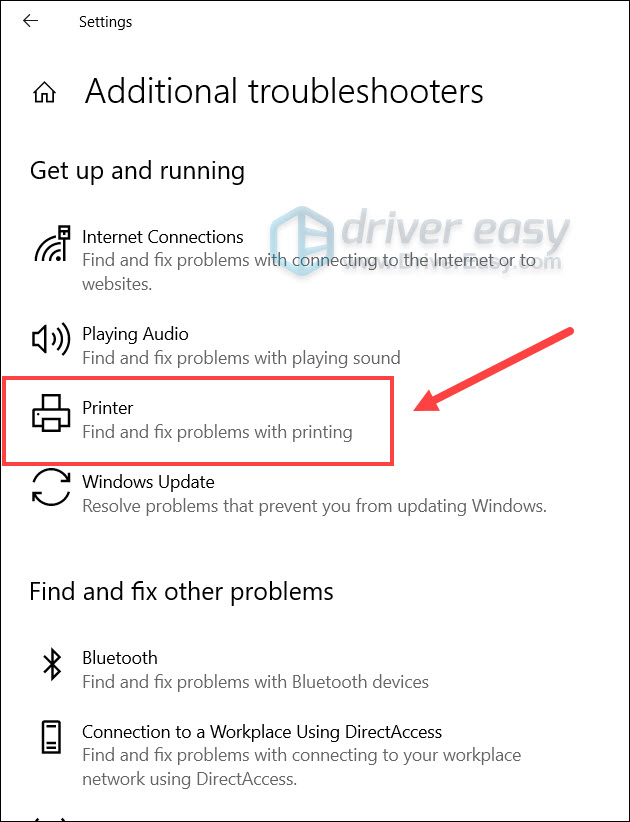
If the troubleshooter can’t help you fix the issue, take a look at the next method.
Fix 3: Reinstall your printer driver
Drivers are a set of computer software that let your PC communicate with the hardware. Some users reported that this could be a driver issue that can be fixed by reinstalling the printer driver. You can use to following steps to reinstall the printer driver correctly:
- On your keyboard, press Win+R (the Windows logo key and the R key) at the same time to invoke the Run box.
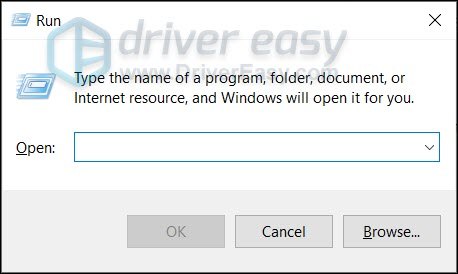
- Type or paste devmgmt.msc. Then click OK to open Device Manager.

- Click to expand the Print queues category. Right-click your printer and select Uninstall device. (If you can’t find your printer in Device Manager, you can download Driver Easy to scan for missing drivers.)
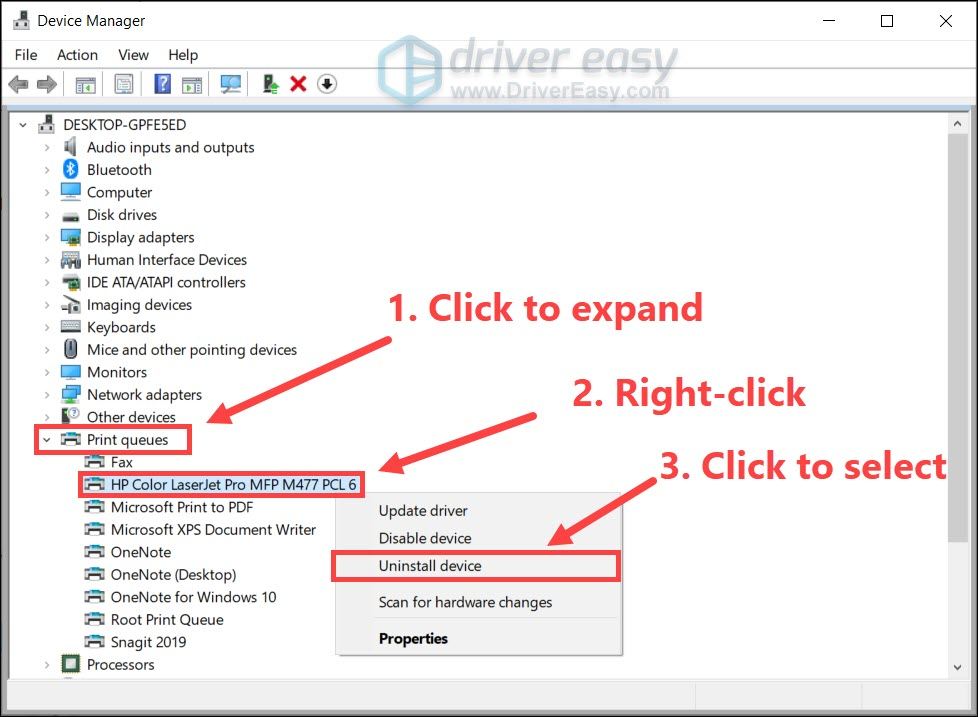
- Click Uninstall.
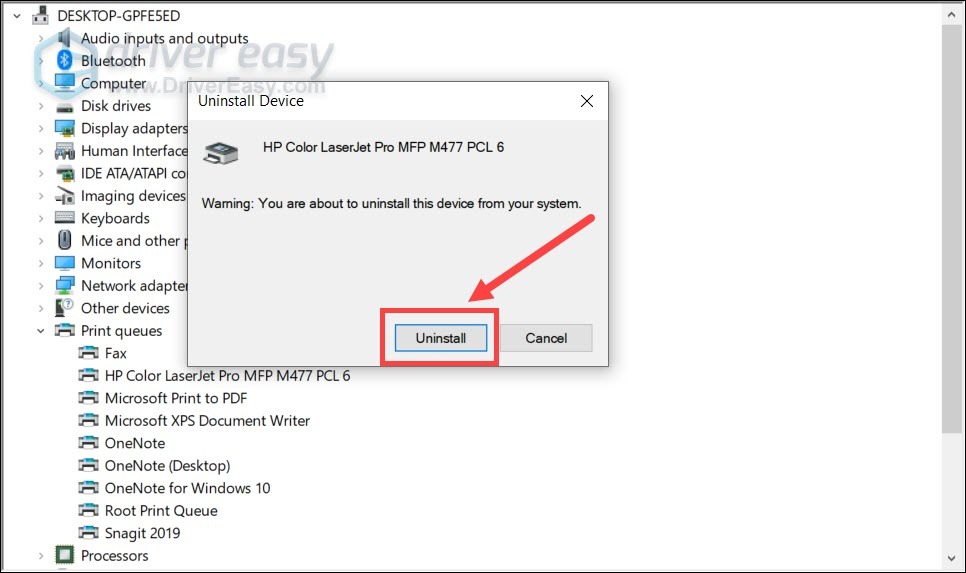
Usually Windows will install the missing printer driver automatically after a reboot. But if it doesn’t, you need to go to your printer manufacturer’s website and search for your printer model. Be sure to download the latest correct driver installer that’s compatible with your system. If you’re not familiar with computer drivers, you can use Driver Easy to repair and update drivers automatically.
- Download and install Driver Easy.
- Run Driver Easy and click the Scan Now button. Driver Easy will then scan your computer and detect any problem drivers.
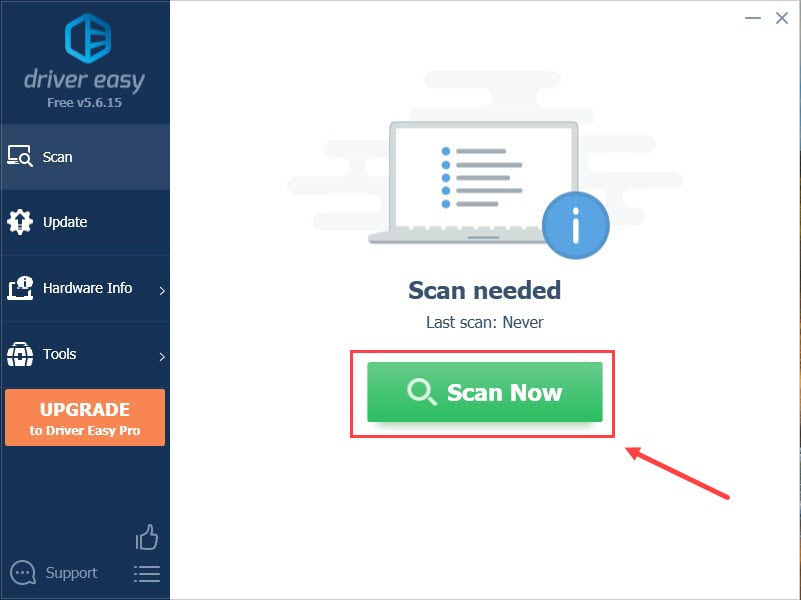
- Click Update All to automatically download and install the correct version of all the drivers that are missing or out of date on your system.
(This requires the Pro version – you’ll be prompted to upgrade when you click Update All. If you don’t want to pay for the Pro version, you can still download and install all the drivers you need with the free version; you just have to download them one at a time, and manually install them, the normal Windows way.)
After updating all the drivers, restart your PC and check if the printer is working now.
If the latest driver doesn’t give you luck, simply move on to the next solution.
Fix 4: Install all Windows updates
Windows system updates should fix glitches and improve the overall stability. If you don’t remember when was the last time you checked for system updates, definitely do it now.
- On your keyboard, press Win+I (the Windows logo key and the i key) to open the Windows Settings app. Click Update & Security.

- Click Check for updates. Windows will then download and install the available patches. It might take some time (up to 30 mins).
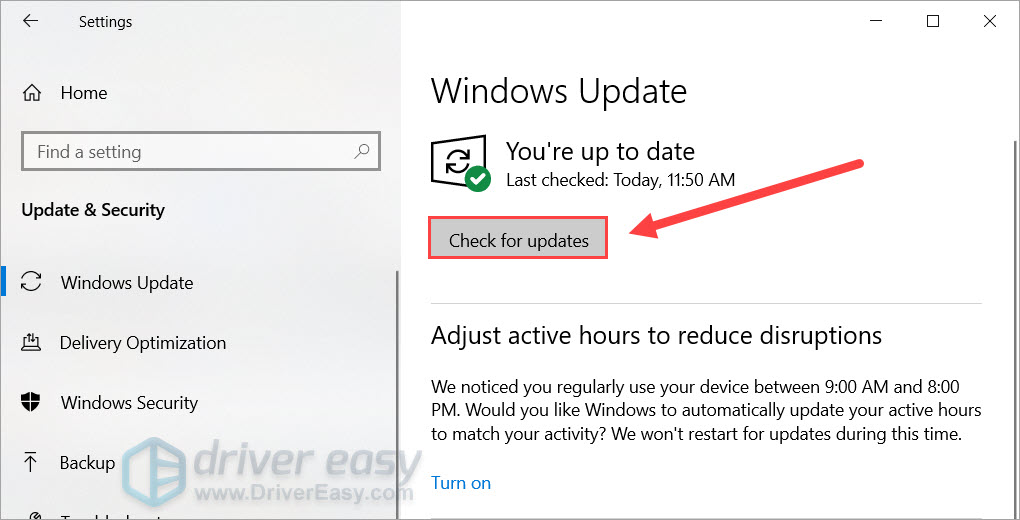
If this fix doesn’t give you luck, you can continue to the next one below.
Fix 5: Check for corrupted system files
In the worst case, you could be dealing with a system-level issue. This could mean that registry values are messed up, or it could also mean the whole system, or at least some important files are missing or corrupted. But before you try the nuclear method to reinstall Windows, you can first use a system repair tool to scan for system issues.
Step 1. Scan corrupt files with System File Checker
1) On your keyboard, press the Windows logo key and R at the same time to open the Run box. Type cmd and press Ctrl+Shift+Enter to run Command Prompt as administrator.
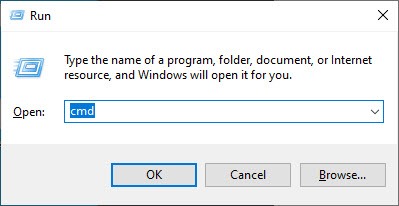
Click Yes when prompted for permission to make changes to your device.
2) In the Command Prompt, type the following command and hit Enter.
sfc /scannow
3) System File Check will begin to scan all system files and repair any corrupted or missing ones it detected. This may take 3-5 minutes.

4) You may receive something like the following messages after the verification.
- no errors
- it fixed some errors
- could not fix all errors
- could not fix errors at all
- ……
No matter what message you receive, you can try running dism.exe (Deployment Image Servicing and Management) to further scan the health of your PC.
Step 2. Run dism.exe
1) Run Command Prompt as admin and enter the following commands.
- This command line will scan the health of your PC:
dism.exe /online /cleanup-image /scanhealth
- This command line will restore the health of your PC:
dism.exe /online /cleanup-image /restorehealth
2) After the restore health process finishes, you may get some error messages.
- If restore heath gave you errors, you can always try this command line. This will take up to 2 hours.
dism /online /cleanup-image /startcomponentcleanup
- If you get Error: 0x800F081F with the restore health scan, reboot your PC and run this command line.
Dism.exe /Online /Cleanup-Image /AnalyzeComponentStore
If the System File Check finds any files corrupted, follow the on-screen instructions to repair them, and then restart your computer for the changes to take full effect.
Hopefully this post helps you get your printer working again. If you have any questions or ideas, don’t hesitate to leave a comment down below.





